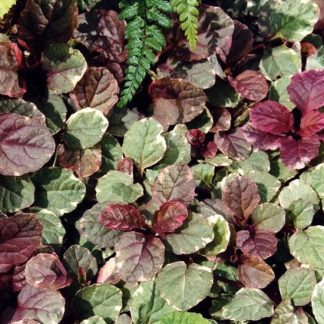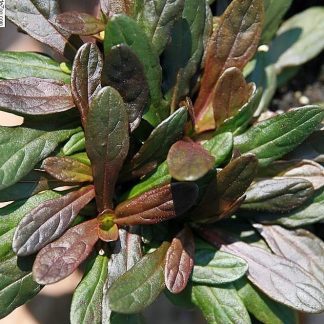Ajuga
Ajuga: The Shade-Loving Groundcover That Does It All
If you’ve ever looked at a shady spot in your garden and wondered what on earth could grow there, you’re not alone. Many of us have battled with bare patches under trees, along fence lines, or in those awkward corners that never seem to see the sun. But here’s the good news: Ajuga is your secret weapon. It’s the plant that turns struggle into beauty—effortlessly.
Let’s dig into what makes Ajuga such a superstar. Whether you’re a seasoned gardener or just getting your hands dirty for the first time, this little groundcover is ready to impress.
Meet Ajuga: A Shade-Loving Groundcover
Ajuga (pronounced uh-JOO-guh) is a low-growing, spreading perennial that’s loved for both its foliage and its flowers. It’s part of the mint family, and while it doesn’t smell minty, it does have that familiar spreading habit. This plant grows outward more than upward, forming a dense mat that hugs the ground. That’s why many gardeners use it as a groundcover—a beautiful living carpet that fills in bare patches and keeps weeds away.
Let’s break it down:
- Botanical name: Ajuga reptans
- Common names: Bugleweed, carpetweed
- Plant type: Perennial
- Hardiness zones: 3 to 9
- Height: Usually 4–6 inches tall
- Spread: Can spread up to 2 feet or more
- Sunlight: Partial shade to full shade (though some varieties can take a bit of sun)
Why Gardeners Love Ajuga
Here’s the big reason we all love Ajuga: It’s so easy. You don’t have to baby it. You don’t need to prune it every season. You can pretty much plant it and forget it—and it will still show up year after year.
✅ Low Maintenance
No need to deadhead. No need to mow or cut back in spring. Ajuga just keeps on growing.
✅ Great for Problem Spots
Got a shady area where nothing grows? Ajuga will grow there.
Got a slope that erodes every time it rains? Ajuga can hold the soil in place.
Got tree roots sucking up all the nutrients from your flower beds? Ajuga can still find a way to thrive.
✅ Stunning Foliage
Even when it’s not in bloom, Ajuga’s leaves steal the show. Some varieties have deep purple, bronze, or variegated leaves. This makes it a showstopper even in early spring or late fall.
✅ Beautiful Blooms
In spring and sometimes again in fall, Ajuga shoots up tiny flower spikes. These flowers come in blue, purple, pink, or white, depending on the variety. They rise just above the leaves and attract bees and butterflies—so yes, Ajuga is pollinator-friendly too!
Shop for Ajuga Plants
Showing all 4 results
-

Ajuga reptans, Burgundy Glow
Select options This product has multiple variants. The options may be chosen on the product page -

Ajuga reptans, Chocolate Chip
Select options This product has multiple variants. The options may be chosen on the product page -

Ajuga reptans, Mahogany
Select options This product has multiple variants. The options may be chosen on the product page -

Ajuga reptans, Silver Queen
Price range: $6.99 through $7.99 Select options This product has multiple variants. The options may be chosen on the product page
Why Gardeners Love Ajuga
1. It’s Low Maintenance. Really.
Ajuga practically takes care of itself. You won’t need to:
- Deadhead flowers
- Cut it back every spring
- Water it constantly
- Pamper it with fancy fertilizer
Once it’s established, it just keeps going. Like a green (and sometimes purple or bronze) carpet that never needs vacuuming.
2. It Thrives in Shade
So many plants struggle without sunlight, but not Ajuga. It loves shady areas. It will also grow in part sun, but where it really shines is in those forgotten corners and under tree canopies where grass won’t grow.
3. It’s Stunning All Year Round
The foliage alone is reason to plant Ajuga. Depending on the variety, leaves can be:
- Deep green
- Burgundy
- Bronze
- Chocolate
- Variegated with splashes of pink or cream
In spring, Ajuga puts on an extra show by sending up short spikes of tiny, tubular blue, purple, pink, or white flowers. These blooms rise above the foliage like mini flags waving in the breeze. Bees and pollinators love them.
4. It’s a Natural Weed Blocker
Once Ajuga gets established, it forms a dense mat that blocks out weeds. This is a gardener’s dream: less weeding, more relaxing.
5. It’s Pet and People Friendly
Ajuga is non-toxic to pets and children, making it a safe choice for family gardens. You can let the kids play barefoot and the pets roam without worry.
How to Plant Ajuga
You don’t need to be a garden guru to grow Ajuga. Here’s a step-by-step guide:
Step 1: Pick the Right Spot
- Light: Full shade to part sun
- Soil: Well-drained is best, but Ajuga tolerates clay and poor soils too
- Moisture: Average to slightly moist; doesn’t like to dry out completely
Step 2: Prepare the Soil
- Loosen it up with a shovel or garden fork.
- Mix in some compost if your soil is heavy or lifeless.
Step 3: Plant the Ajuga
- Space plants about 6–12 inches apart.
- Water them in well after planting.
Step 4: Mulch (Optional)
- Add a light layer of mulch to help with moisture retention and weed control.
- Keep mulch off the crowns of the plants to avoid rot.
Growing Tips for Happy Ajuga
- Watering: Water regularly during the first few weeks. After that, Ajuga only needs water during dry spells.
- Fertilizer: Not required, but you can feed lightly with a balanced fertilizer in spring if desired.
- Trimming: Not necessary unless you want to tidy it up. If the flowers look messy after blooming, feel free to snip them off.
Is Ajuga Invasive?
Ajuga spreads through runners, also called stolons. It doesn’t just stay in one place—it moves. That’s part of its charm but also something to watch for.
If you’re planting Ajuga near flower beds or lawns, you might want to create a border or edge to keep it from wandering too far. In large areas or wild gardens, let it go! It will fill in beautifully.
Some varieties spread faster than others, so read the label or ask at your nursery.
Varieties to Try
Here are a few popular Ajuga cultivars to explore:
‘Black Scallop’
Deep, almost black foliage with rich blue flowers. Bold and dramatic.
‘Burgundy Glow’
Leaves with a mix of cream, pink, and burgundy. Eye-catching even without blooms.
‘Chocolate Chip’
Narrow leaves and compact habit. Perfect for smaller spaces or containers.
‘Caitlin’s Giant’
Larger leaves and a fast spreader. Makes a statement in shady beds.
Each one brings a different color and texture to the garden. Try mixing varieties for extra visual interest.
Perfect Places to Plant Ajuga
You can tuck Ajuga just about anywhere. Try it in:
- Woodland gardens
- Under trees or shrubs
- Along walkways and borders
- Between stepping stones
- Shady slopes or hillsides
- Containers and hanging baskets (yep, it works there too!)
Because it spreads low and wide, it’s especially useful for erosion control on tricky landscapes.
Ajuga and Wildlife
Ajuga is a quiet hero when it comes to supporting pollinators. In early spring, when many other plants are still waking up, Ajuga is already blooming. That means bees, butterflies, and other helpful insects get an early start.
You’ll often see bumblebees hovering around the flower spikes. And who doesn’t love the gentle hum of spring?
Troubleshooting: What Can Go Wrong?
Ajuga is easy-going, but a few things to keep in mind:
Crown Rot: This can happen if plants stay too wet, especially in humid climates. Make sure soil drains well and avoid piling mulch against the stems.
Crowding: Over time, Ajuga can get thick and tangled. Every 2–3 years, dig up and divide your patch to keep it healthy.
Invasiveness: As mentioned, Ajuga likes to spread. Use edging or plant in contained areas if you want to keep it in check.
Why We Love Ajuga (And You Will Too)
Ajuga isn’t just a plant—it’s a solution. It fills in hard-to-grow places, brings color and life to shady corners, and asks for very little in return. With its striking foliage, charming blooms, and low-maintenance lifestyle, Ajuga is a gardener’s dream come true.
Whether you’re looking to carpet a woodland path or just fill a patchy spot beneath a tree, Ajuga steps up. It’s easy. It’s beautiful. And it works hard so you don’t have to.
Showing all 4 results



